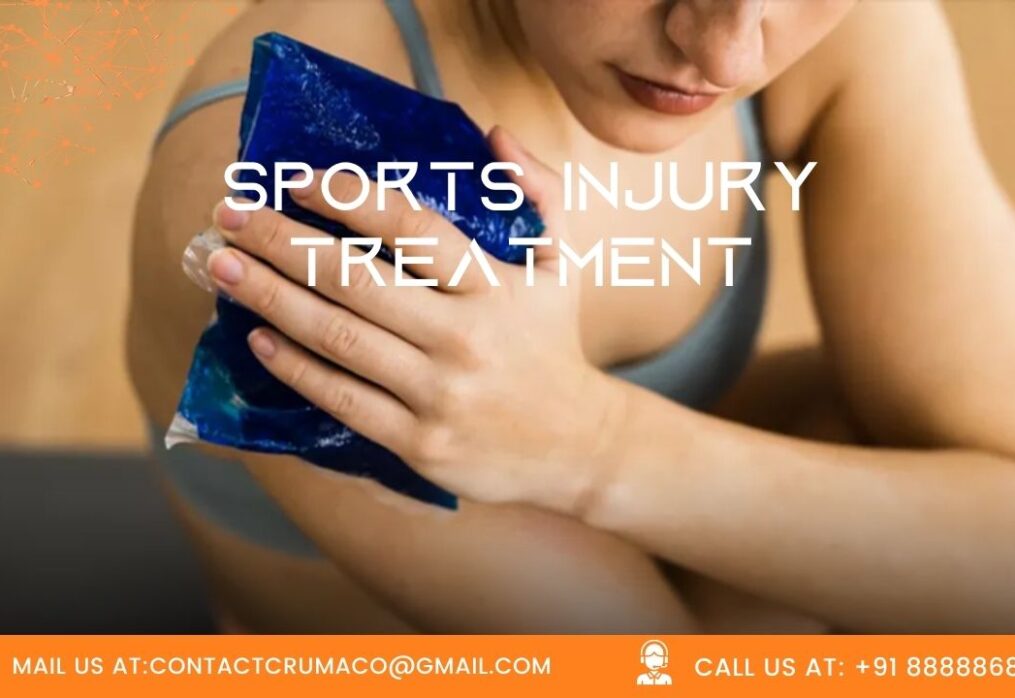Sports Injury Treatment | Crumaco
Sports injuries are physical damages that happen during exercise or while participating in a sport. These injuries can be minor, such as sprains and strains, or more severe, such as fractures, dislocations, or ligament tears. They commonly affect areas like muscles, joints, and bones, with the severity of the injury depending on various factors including the type of sport, intensity of activity, and use of protective equipment. At Crumaco, under the expert guidance of Dr. Tanvir Logani, sports injury treatment is elevated to a new level of excellence. Specializing in the comprehensive care of sports-related injuries, Dr. Logani employs a combination of advanced medical techniques and personalized therapeutic strategies to ensure each patient receives optimal care. Whether you’re a professional athlete or a recreational sports enthusiast in need of treatment, Crumaco is your trusted resource in Delhi for recovering strength, mobility, and performance. Trust Dr. Logani and Crumaco for effective and dedicated sports injury treatment, tailored specifically to your unique needs.
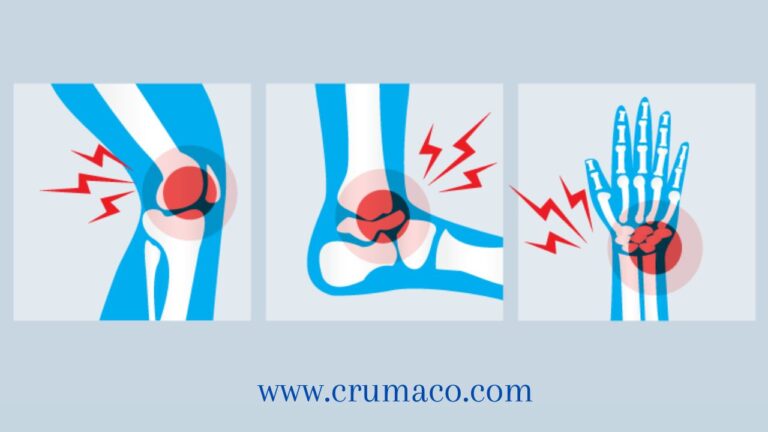
Types of sports injuries
Sports injuries can be classified into several types, each affecting different parts of the body and arising from various forms of physical activity. Here are some common types of sports injuries:
- Sprains: These occur when ligaments (the bands connecting two bones together in a joint) are overstretched or torn. Common areas for sprains are ankles, knees, and wrists.
- Strains: Often referred to as pulled muscles, these are tears in muscle fibers or tendons (which connect muscles to bones). Strains are typically the result of overstretching or overusing muscles, like in the back or hamstring.
- Fractures: This type involves a break in a bone and can range from minor (hairline) fractures to severe compound fractures where the bone pierces the skin.
- Dislocations: This injury occurs when the ends of bones are forced out of their normal positions in the joint. Common locations for dislocations are shoulders, fingers, and the knee cap.
- Tendonitis: Inflammation or irritation of a tendon, usually due to overuse. Common examples include Achilles tendonitis and tennis elbow.
- Meniscal Tears: These involve damage to the meniscus, a piece of cartilage that acts as a cushion between the femur (thighbone) and tibia (shinbone). This is common in sports that involve twisting movements.
- ACL Injuries: Injuries to the anterior cruciate ligament, one of the major ligaments in the knee. ACL injuries are common in sports that require sudden stops and changes in direction, such as soccer, basketball, and skiing.
- Concussions: A type of traumatic brain injury caused by a bump, blow, or jolt to the head. Symptoms can include headaches, dizziness, and problems with concentration, memory, balance, and coordination.
- Rotator Cuff Injuries: These are injuries to any of the four rotator cuff muscles in the shoulder that are important for shoulder stability and movement. These can range from mild strains to complete tears.
- Shin Splints: Pain along the shin bone (tibia), often caused by running, especially on hard surfaces or with improper footwear.
These injuries can result from poor training practices, improper equipment, lack of conditioning, or accidents. Recovery may involve rest, physical therapy, and in some severe cases, surgery. Effective prevention strategies include using the right equipment, proper training techniques, and adequate rest to allow the body to heal.
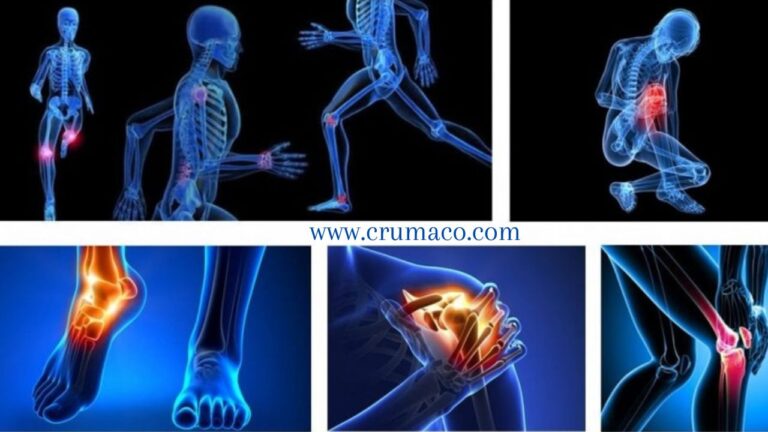
First aid for sprains, strains and joint injuries
First aid for sprains, strains, and joint injuries is crucial to manage pain, reduce swelling, and promote recovery while preventing further damage. Here’s a simple guide to administer first aid for these common sports injuries:
R.I.C.E. Method
Rest, Ice, Compression, and Elevation (R.I.C.E.) is the standard approach for immediate treatment of sprains, strains, and joint injuries.
- Rest: Avoid using the injured area to prevent further damage. Resting helps the healing process by minimizing stress on the injured tissues.
- Ice: Apply ice or a cold pack to the injury as soon as possible to reduce swelling and numb the pain. Do not apply ice directly to the skin—wrap it in a cloth or use a commercial cold pack. Apply ice for 20 minutes every hour as needed within the first 48 hours after the injury.
- Compression: Use an elastic compression bandage to wrap the injured area. This helps reduce swelling and provides support. However, make sure the bandage is not too tight, as this can cause further injury or hinder circulation.
- Elevation: Elevate the injured area above the level of the heart, if possible, to help reduce swelling. Use pillows to prop up an injured limb comfortably.
Additional Tips
- Avoid heat, alcohol, and massage: In the first 48 hours after an injury, avoid using heat packs, drinking alcohol, or massaging the injured area, as these can increase swelling and bleeding.
- Pain relief: Over-the-counter pain relievers like ibuprofen or acetaminophen can help manage pain. However, it’s best to consult with a healthcare provider before taking medication, especially if you have pre-existing health conditions or are taking other medications.
- Monitor for more severe symptoms: While minor sprains and strains can often be treated at home, more severe injuries require medical attention. Watch for signs of severe pain, inability to bear weight, significant swelling, numbness, or if the joint appears deformed.
- Follow-up care: If symptoms persist despite first aid treatment, or if there is no improvement after a few days, consult a healthcare professional. Physical therapy might be necessary to aid recovery and prevent future injuries.
Following these steps can effectively manage initial symptoms of sprains, strains, and joint injuries. Early and appropriate first aid not only alleviates discomfort but also lays the foundation for a smoother and potentially faster recovery.
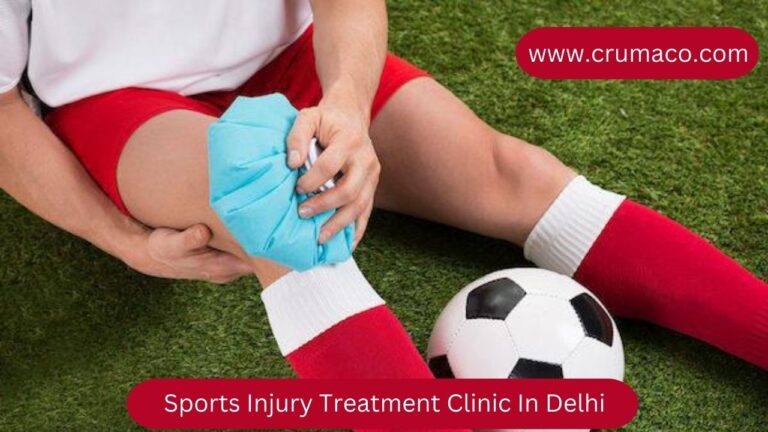
What are the most common parts of the body injured?
Injuries can happen to any part of the body, but some areas are more susceptible to injury, especially in sports or physical activities. Here are some of the most commonly injured body parts:
- Ankles: Ankle sprains are very common in activities that involve running, jumping, or quick changes in direction. The ligaments around the ankle can be overstretched or torn.
- Knees: The knee is a complex joint that bears a significant amount of body weight. Injuries here can include ligament tears (such as ACL, PCL, MCL injuries), meniscal tears, and patellar tendinitis.
- Shoulders: The shoulder joint has a wide range of motion and is prone to injuries like dislocations, strains, sprains, and rotator cuff injuries, which can occur from overuse or during activities involving overhead motions.
- Wrists and Hands: These areas can be injured in falls when you extend your hand to catch yourself, resulting in sprains, strains, fractures, and dislocations. Sports that involve extensive use of the wrist, like tennis and golf, can also lead to injuries like wrist tendinitis or ‘tennis elbow.’
- Back: Lower back pain is very common due to muscle or ligament strain, herniated discs, or spinal issues. It can be caused by repetitive activities, lifting heavy objects incorrectly, or sudden awkward movements.
- Hamstrings: Located at the back of the thigh, the hamstring muscles are susceptible to strains and tears, particularly in sports that require sprinting, jumping, or sudden stopping and starting.
- Groin: The area of the inner thigh can be strained during activities that involve sudden changes in direction or intense physical exertion, common in sports like hockey, soccer, and football.
- Elbows: Overuse injuries such as golfer’s elbow or tennis elbow result from repetitive wrist and arm motions. Elbow dislocations and fractures can also occur during falls or direct impacts.
- Head: Concussions are common head injuries, especially in contact sports like football, soccer, and hockey. They occur due to impacts to the head, leading to symptoms that can affect cognitive and physical functions.
- Feet: Injuries to the feet, including fractures, sprains, and conditions like plantar fasciitis, are common among athletes, particularly runners and those involved in jumping sports.
Understanding the common injuries for each body part can help in taking preventive measures and providing appropriate first aid or medical care when injuries occur.
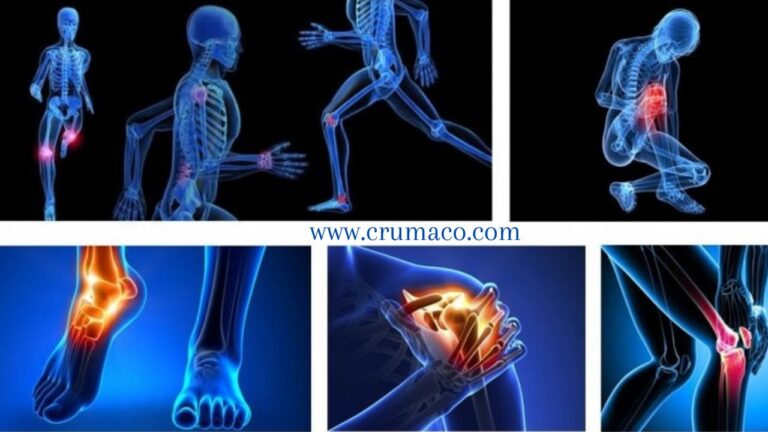
Emergency situations
Call an ambulance for:
- prolonged loss of consciousness
- neck or spine injuries
- broken bones
- injuries to the head or face
- eye injuries
- abdominal injuries.
Where to get help Treatment for sports injuries ?
If you’re searching for top-notch sports injury treatment in Delhi, Crumaco is your go-to destination. Led by the esteemed Dr. Tanvir Logani, Crumaco specializes in providing expert care for sports-related injuries. Whether you’re dealing with a sprain, strain, or more complex joint issues, Dr. Tanvir Logani approach combines the latest medical advancements with personalized treatment plans to ensure you receive the best possible care. His expertise in sports medicine makes him a trusted name for athletes and active individuals alike. Trust Crumaco for all your sports injury treatment needs in Delhi, where your recovery is in expert hands.
